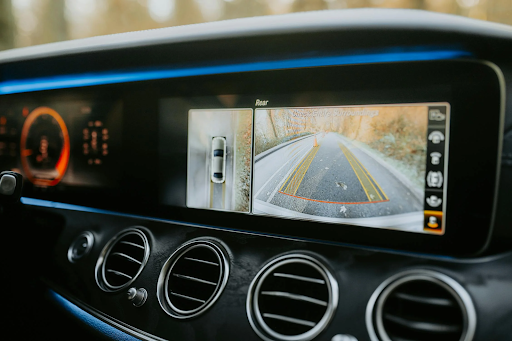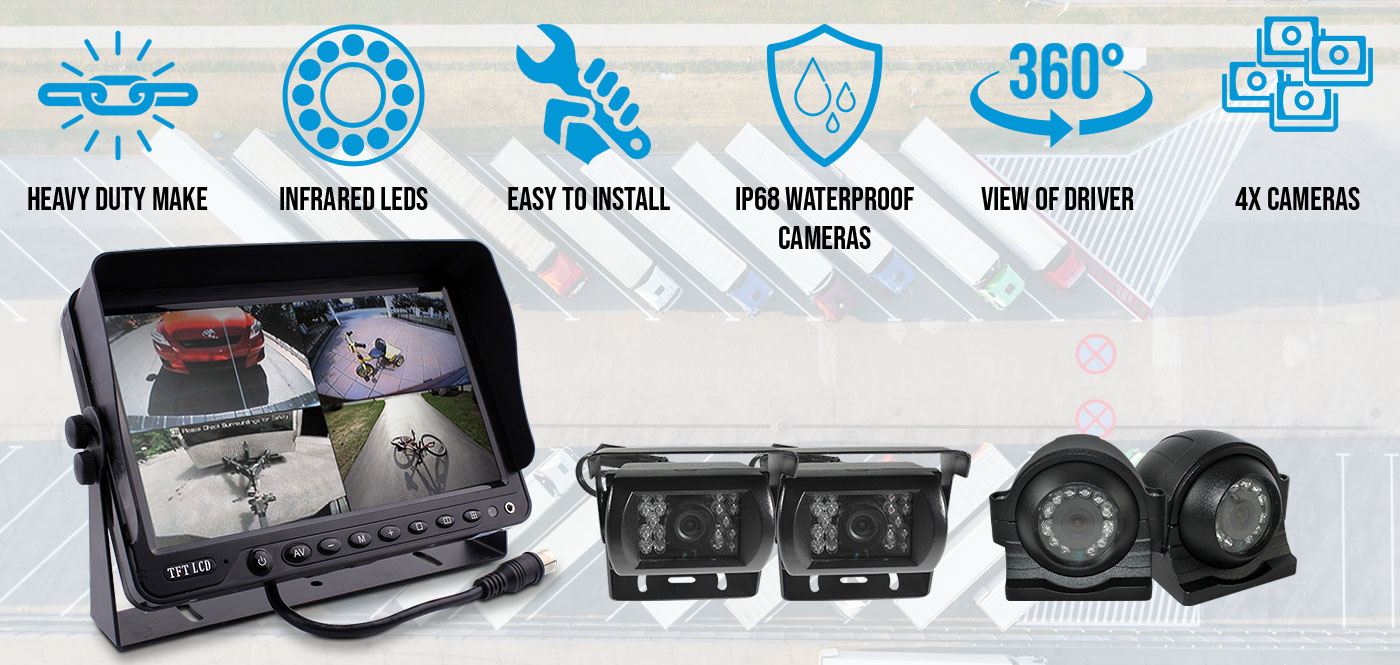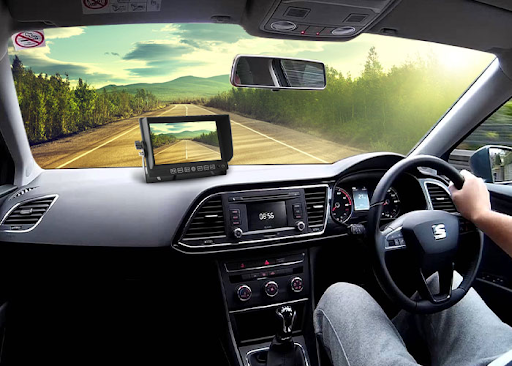Backing up a vehicle can be stressful — tight parking spots, blind spots, and unexpected obstacles make the task trickier than it should be. That’s where a reversing camera kit comes in, offering drivers a clear view of what’s behind them. But when choosing between wireless and wired reverse cameras, things can get a bit confusing. Let’s break it down and help you find the best fit for your vehicle.

Wireless Reverse Cameras: Pros and Cons
Wireless reverse cameras have gained popularity for their convenience and easy installation, but they’re not perfect. Let’s take a closer look at the good and the not-so-good.
Pros:
- Easy Installation: No need to run cables through the entire length of your vehicle. This makes installation quicker and simpler, especially for larger vehicles.
- Flexibility: A wireless reversing camera is ideal if you need a portable solution. They can be moved between vehicles with minimal effort.
- Sleek Setup: Without long wires, your vehicle's interior stays cleaner and more organised.

Cons:
- Signal Sensitivity: A wireless rear view camera relies on radio signals, which might occasionally experience interference from other wireless devices, power lines, or even bad weather.
- Slight Delay: In rare cases, there may be a brief delay between what the camera captures and what shows up on the monitor, which could be noticeable in fast-paced driving situations.
- Power Requirement: While the camera transmits wirelessly, it still needs a power source, often requiring connection to the reverse light.
Wired Reverse Cameras: Pros and Cons
Wired reverse cameras are the traditional choice, known for their reliability and stable performance. Let’s dive into their advantages and drawbacks.
Pros:
- Stable Connection: With a direct cable connection, there’s no risk of signal interference, ensuring a steady, real-time feed.
- Better Image Quality: Wired cameras generally offer clearer video, as the signal isn’t compressed or transmitted wirelessly.
- Reliability: They’re not affected by electronic interference or weather conditions, making them a dependable choice.

Cons:
- Thorough Installation: Setting up a wired system takes a bit more time and attention, as cables need to be routed through the vehicle for a secure connection.
- Dedicated Setup: Once installed, the system is firmly in place, providing long-term reliability without needing adjustments.
- Additional Components: The added cables require careful routing to maintain a tidy appearance, though a neat installation solves this.
Finding the Best Fit for Your Vehicle
The right reverse camera for a car depends on your vehicle type and how you plan to use it. Let’s explore what works best for different kinds of vehicles:
- Cars and Small SUVs: For everyday vehicles, a WiFi reversing camera is often the best bet. They’re easy to install and offer sufficient coverage for tight parking spaces or crowded driveways. Plus, the minimal risk of interference in these environments makes wireless systems a convenient choice.
- Trucks and Vans: Larger vehicles benefit from the stability of wired reversing camera systems. Since trucks and vans have longer bodies, wireless signals may struggle to reach the monitor without interference. A wired camera provides the reliability and clear visuals needed for precise maneuvers.
- Trailers and Caravans: If you tow a trailer or caravan, a hybrid approach can work wonders. Use a wired camera for the vehicle itself and a wireless setup for the trailer. Some systems offer trailer-specific connections that seamlessly integrate both.
- Commercial Vehicles and Fleets: For work vehicles that require daily precision, wired cameras offer unmatched reliability. They handle high-use scenarios better, ensuring that drivers always have a clear view without worrying about signal drops.

Other Key Factors to Consider
When deciding between wireless and wired reverse cameras, a few other factors can sway your decision:
- Budget: Wireless reversing camera systems tend to be more affordable upfront due to simpler installation, while wired systems may cost more due to labour-intensive setup.
- Usage Frequency: If you frequently park in tight spaces or drive in areas with lots of pedestrian traffic, reliability is crucial, making wired systems worth the investment.
- Weather Conditions: For those in regions with heavy rain or snow, wired reversing cameras offer better performance, as they aren’t affected by weather-related interference.
Final Verdict: Which One Should You Choose?
If you value quick installation, portability, and convenience, go for a wireless reverse camera. They’re perfect for personal vehicles and casual use. However, if reliability and stability are your top priorities, especially for larger vehicles or commercial purposes, a wired camera is the way to go.
For some drivers, combining both options is the ultimate solution. Use a wired camera as your primary system and add a wireless camera for extra coverage, like keeping an eye on your trailer.
No matter which system you choose, a reverse camera kit is a game-changer for safety and confidence on the road. Take a little time to assess your needs, and you’ll find the perfect camera setup to make reversing a breeze — and maybe even a little fun.
Ready to upgrade your vehicle’s safety? Dive into the world of reverse cameras and discover the peace of mind that comes with seeing what lies behind you.
Frequently Asked Questions:
1. How to install a reverse camera in a car?
Installing a reversing camera kit typically means you'll need to mount the camera close to your license plate, connect it to the reverse light for power, and run the video feed to a monitor on your dashboard. Wireless systems are a breeze since they eliminate the need for long cables, while wired setups might take a bit longer but usually provide better stability. Many drivers opt for professional installation, but if you're handy with basic tools and have a guide, you can definitely tackle it yourself.
2. Is a reversing camera a necessity?
While most vehicles don’t legally require a reverse camera kit, having one is highly advisable. It helps minimize blind spots, enhances parking safety, and can prevent accidents—especially in tight spots or around children and pets. Once you’ve experienced the convenience of one, it’s tough to imagine going without it.
3. Are wireless reversing cameras any good?
Absolutely! Wireless reverse cameras are fantastic for their convenience and straightforward installation. They work well for cars, small SUVs, and everyday parking scenarios. Just keep in mind that wireless systems can occasionally face minor signal interference, which is why larger vehicles often do better with wired setups.
4. What is the best wireless reversing camera for a caravan?
When it comes to finding the best wireless reversing camera for a caravan in Australia, you want something that offers long-range, stable transmission, clear visuals, and solid weather resistance. Elinz has got you covered with their wireless caravan reversing camera kits, specifically designed for towing setups. These kits provide excellent signal performance, are built to last, and offer wide-angle views that are perfect for larger caravans. With these systems, caravan owners can enjoy reliable visibility without the hassle of complicated wiring.
Did you enjoy reading this article?
Stay updated on our latest deals and promos by following our social media accounts.
Find this article helpful? Don't forget to click on the share buttons below.




